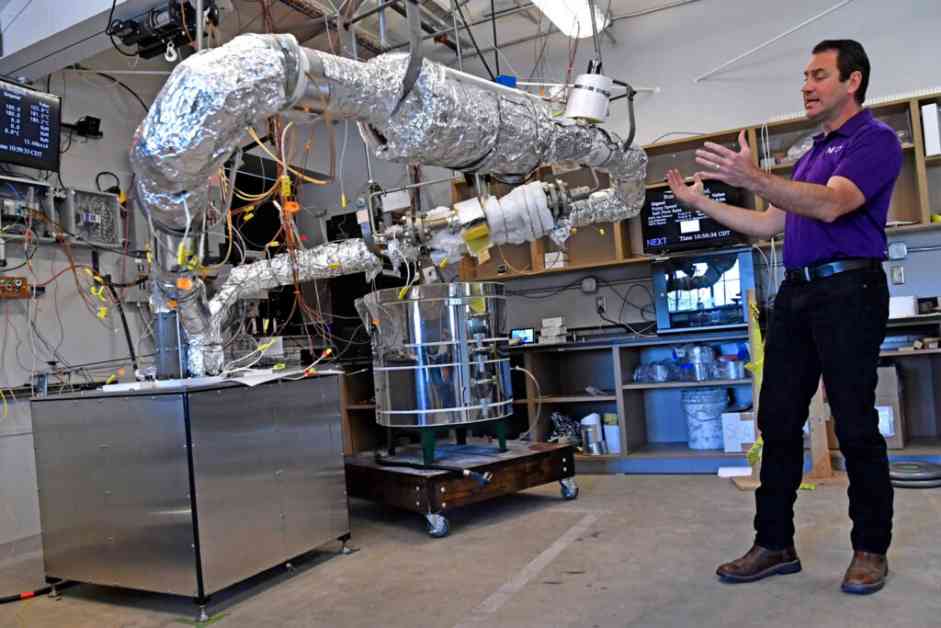The small city of Abilene in West Texas may not be the first place that comes to mind when thinking of nuclear power, but it is quietly emerging as a hub for cutting-edge atomic energy research. In a race to usher in the next generation of American nuclear power, scientists at Abilene Christian University are nearing the completion of a groundbreaking project to construct a small, one megawatt molten salt reactor. This ambitious endeavor, spearheaded by the Abilene-based Natura Resources, has secured one of just two permits issued by the U.S. Nuclear Regulatory Commission to build an “advanced” reactor.
The journey to establish Abilene as a nucleus for nuclear innovation began with the vision of Rusty Towell, a nuclear physicist at Abilene Christian University and the lead developer of Natura’s reactor. Rusty, an Abilene native and the son of two ACU faculty members, poured a decade of dedication into this project, marking significant milestones along the way. In 2015, he founded the NEXT Lab at ACU, a state-of-the-art facility for advanced nuclear testing. This initiative gained momentum with a generous $3 million donation from a local oil magnate in 2017, and was further fueled by a partnership with the U.S. Department of Energy in 2019. The culmination of these efforts led to the formation of Natura in 2020 and the completion of construction on NEXT’s new facility in 2023. The pivotal moment arrived in 2024 when the NRC issued a permit for the construction of the first advanced reactor at an American university.
Advanced nuclear reactors represent a paradigm shift in American nuclear power technology, marking the first major advancement in 70 years. These new designs offer enhanced safety features and efficiencies compared to traditional models, with a focus on reducing hazardous waste production. While conventional reactors rely on water-filled cooling systems, advanced reactors utilize alternative coolants like molten salt or metal. This innovative approach allows these reactors to operate at higher temperatures and lower pressures, ultimately increasing energy output while minimizing the risk of leaks or explosions.
Natura’s design features a unique molten salt coolant, which enables the reactor to operate at extremely high temperatures without the need for high pressure. In the event of a system rupture, the reactor is designed to leak a molten sludge that solidifies in place, as opposed to releasing steam into the atmosphere. Additionally, the use of liquid uranium fuel, dissolved into the molten coolant, reduces radioactive waste production and facilitates easier recycling. This forward-thinking design approach is poised to revolutionize the landscape of nuclear energy generation and pave the way for a sustainable future.
The road to commercial deployment of advanced nuclear reactors is a multifaceted journey, requiring rigorous review and approval processes by regulatory bodies such as the NRC. While the construction of university research reactors marks a significant step forward, the next phase involves the issuance of permits for larger commercial reactors. These reactors are envisioned to power a wide array of industrial facilities, and their modular design allows for streamlined manufacturing and installation processes. The prospect of deploying small reactors to individual projects presents a paradigm shift in the energy sector, offering self-sustaining power sources for large-scale operations.
The state of Texas, renowned for its robust energy sector, has emerged as a key player in the advancement of nuclear power technology. With a focus on attracting nuclear sector investments and fostering innovation, Texas is poised to become a global leader in advanced nuclear reactor development. State leaders have taken proactive steps to establish Texas as a nucleus for nuclear innovation, envisioning a future where the Lone Star State leads the charge in cutting-edge energy solutions.
As Texas embarks on this transformative journey towards a sustainable energy future, the role of public financing and regulatory frameworks looms large. State lawmakers are grappling with complex questions surrounding funding mechanisms, risk assessment, and regulatory oversight as they navigate the uncharted waters of advanced nuclear technology. The delicate balance between fostering innovation and mitigating risk remains a focal point of discussion among stakeholders, underscoring the need for strategic planning and collaboration to ensure the success of these pioneering projects.
In the quest to establish Texas as an energy proving ground for advanced nuclear reactor technology, key stakeholders are working collaboratively to navigate the intricate web of challenges and opportunities that lie ahead. The convergence of innovation, regulation, and investment in the energy sector presents a unique opportunity for Texas to lead the charge in shaping the future of nuclear power. As the state embarks on this transformative journey, the world watches with bated breath, eager to witness the dawn of a new era in American nuclear innovation.















